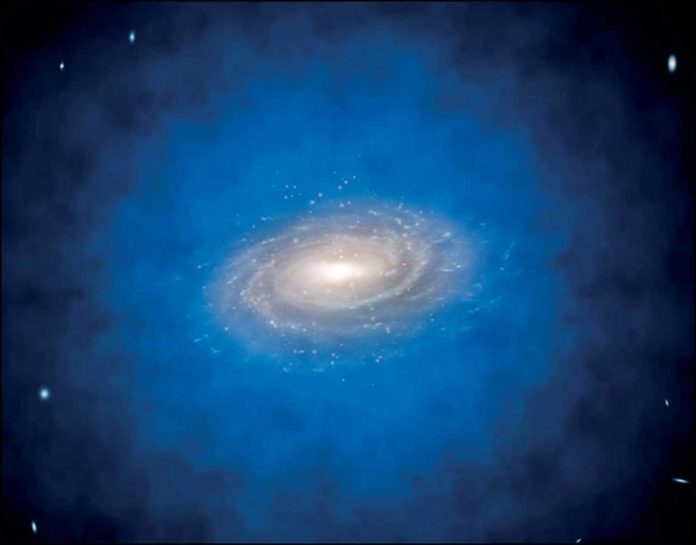How supermassive black holes initially formed?
This is the puzzle that scientists are trying to solve to understand galaxy evolution.
In a recent study, scientists proposed that supermassive black holes could have formed from dark matter. Instead of conventional formation scenarios that involved normal matter, the study suggests that the supermassive black holes could form directly from dark matter in high-density regions in the centers of galaxies.
Standard formation models include ordinary baryonic matter collapsing under gravity to form black holes, which then grow over time. However, the new work explores the potential existence of stable galactic cores made of dark matter and encompassed by a light-dark matter halo, finding that the centers of these structures could turn out to be concentrated to such an extent that they could likewise collapse into supermassive black holes once a critical threshold is reached.
The model suggests that the process could have happened much more quickly and must have allowed supermassive black holes in the early Universe to form before the galaxies they inhabit.
Carlos R. Argüelles, the researcher at Universidad Nacional de La Plata and ICRANet who led the investigation, comments: “This new formation scenario may offer a natural explanation for how supermassive black holes formed in the early Universe, without requiring prior star formation or needing to invoke seed black holes with unrealistic accretion rates.”
Another possibility of the new model is that the critical mass for collapse into a black hole might not be reached for smaller dark matter halos.
Scientists suggest that this might leave smaller dwarf galaxies with a central dark matter nucleus rather than the expected black hole. Such a dark matter core could still mimic the gravitational signatures of a conventional central black hole. At the same time, the dark matter outer halo could also explain the observed galaxy rotation curves.
Carlos said, “This model shows how dark matter haloes could harbor dense concentrations at their centers, which may play a crucial role in helping to understand the formation of supermassive black holes.”
“Here, we’ve proven for the first time that such core–halo dark matter distributions can indeed form in a cosmological framework and remain stable for the lifetime of the Universe.”
Scientists emphasize that there is a need for further studies to shed more light on supermassive black hole formation in the very earliest days of our Universe, as well as investigating whether the centers of non-active galaxies, including our own Milky Way, may play host to these dense dark matter cores.
Journal Reference:
- Carlos R Argüelles, Manuel I Díaz, Andreas Krut, Rafael Yunis. On the formation and stability of fermionic dark matter haloes in a cosmological framework. Monthly Notices of the Royal Astronomical Society, 2021; 502 (3): 4227 DOI: 10.1093/mnras/staa3986
